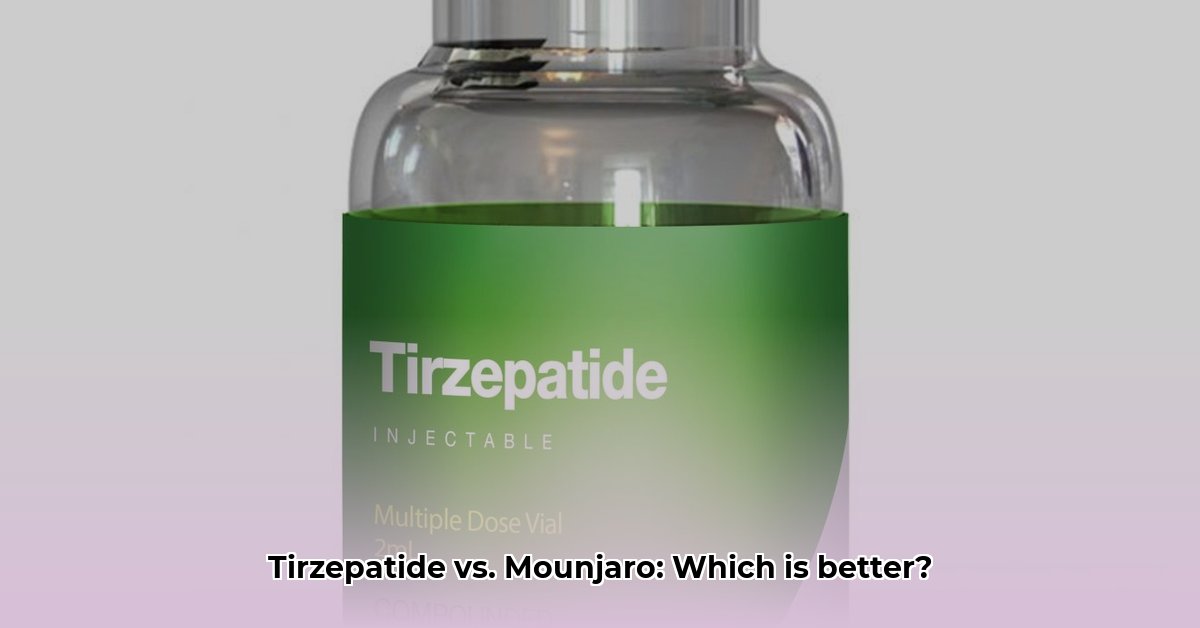Mounjaro (tirzepatide) has gained recognition for its effectiveness in managing type 2 diabetes and aiding weight loss. However, its cost can be prohibitive, leading many to explore compounded tirzepatide as a potentially more affordable option. This guide provides a comprehensive comparison of compounded tirzepatide and Mounjaro, focusing on dosage, safety, cost, and the crucial role of consulting a healthcare professional.
Understanding Compounded Tirzepatide
What is Compounded Tirzepatide?
Compounding involves a pharmacist creating a customized medication according to a doctor’s prescription. They combine raw ingredients, including tirzepatide, to create a specific strength or form not commercially available, such as a liquid instead of a pre-filled pen. This differs significantly from FDA-approved medications like Mounjaro, which are manufactured under strict quality control standards and in standardized doses.
Dosage Considerations
Determining the correct dosage for compounded tirzepatide must be done by a healthcare professional. Unlike Mounjaro, there are no standardized dosage charts for compounded versions. A physician will typically start with a low dose (e.g., 2.5mg weekly) and gradually increase it based on individual response and tolerance, potentially up to 15mg weekly. This cautious “start low, go slow” approach is essential due to the variability inherent in compounded medications. Using online dosage charts designed for Mounjaro is unsafe and ineffective for compounded tirzepatide.
Mounjaro vs. Compounded Tirzepatide: A Direct Comparison
| Feature | Mounjaro | Compounded Tirzepatide |
|---|---|---|
| FDA Approved | ✅ | ❌ |
| Quality Control | Stringent, standardized manufacturing | Variable, dependent on the compounding pharmacy |
| Dosage Consistency | Standardized, pre-filled pens | Potentially inconsistent |
| Insurance Coverage | Often Covered | Usually Not Covered |
| Cost | Higher | Potentially Lower |
| Sterility | Assured | Potential risk of contamination |
| Clinical Trials | Extensive | Limited |
Weighing the Options: Benefits and Risks
Potential Advantages of Compounded Tirzepatide
- Cost Savings: Compounded tirzepatide may offer a less expensive alternative to Mounjaro, although this is not always guaranteed and should not be the sole deciding factor.
- Formulation Flexibility: Compounding can offer customization options like alternative forms (liquid, cream, etc.) or the exclusion of certain inactive ingredients for patients with specific allergies or sensitivities. However, this benefit is often outweighed by the associated safety risks.
Risks of Compounded Tirzepatide
- Quality Control Concerns: Unlike FDA-approved drugs, compounded medications are not subject to the same rigorous manufacturing standards and quality control oversight. This can lead to variations in potency, purity, and sterility.
- Sterility Risks: The risk of contamination introduces the possibility of infection or other adverse reactions.
- Dosage Inconsistency: Variations in the compounding process can result in inconsistent dosages, impacting both efficacy and safety.
- Limited Research: Compounded tirzepatide lacks the extensive clinical trials and research that back FDA-approved medications, making it harder to assess long-term safety and effectiveness.
- Insurance Coverage: Most insurance plans do not cover compounded medications, potentially offsetting any initial cost savings.
Making an Informed Decision
Consulting a Healthcare Professional
Before considering compounded tirzepatide, consult your doctor. They can assess your health status, discuss the benefits and risks, address any concerns, and help you make an informed choice. They can also explore potential insurance coverage for Mounjaro and discuss other FDA-approved alternatives like semaglutide (Ozempic, Wegovy).
Alternatives to Compounded Tirzepatide
Several other FDA-approved GLP-1 receptor agonists, similar to tirzepatide, exist. Discuss these options with your doctor to determine the safest and most effective treatment strategy for your individual needs and circumstances.
Frequently Asked Questions
- What are the common side effects of tirzepatide? Typical side effects may include nausea, vomiting, diarrhea, and constipation. These are generally mild and improve over time, but report any side effects to your physician.
- How do I find a reputable compounding pharmacy (if necessary)? If your doctor recommends compounded medication, they can typically suggest reputable compounding pharmacies in your area. You can also check with your state’s Board of Pharmacy for further information and resources.
Ethical Considerations
When safer, FDA-approved alternatives like Mounjaro exist, using compounded medications raises ethical concerns. It’s essential to discuss these implications with your physician and prioritize your health and safety.
Conclusion
While cost considerations are valid, they should not compromise your health. Compounded tirzepatide may seem appealing due to potentially lower costs, but the risks associated with inconsistent quality, sterility, and dosage accuracy are significant. Prioritize open communication with your doctor, explore alternative treatment options, and make informed decisions that put your well-being first. This guide provides a starting point, but the most current information and personalized guidance will always come from your healthcare provider and ongoing research in this field.
- Wellness Fair Ideas for Work to Boost Employee Wellbeing - December 15, 2025
- Affordable Employee Wellness Fair Ideas for Any Budget - December 14, 2025
- Employee Wellness Programs Strategically Benefit Employee Health And Retention - December 13, 2025
















